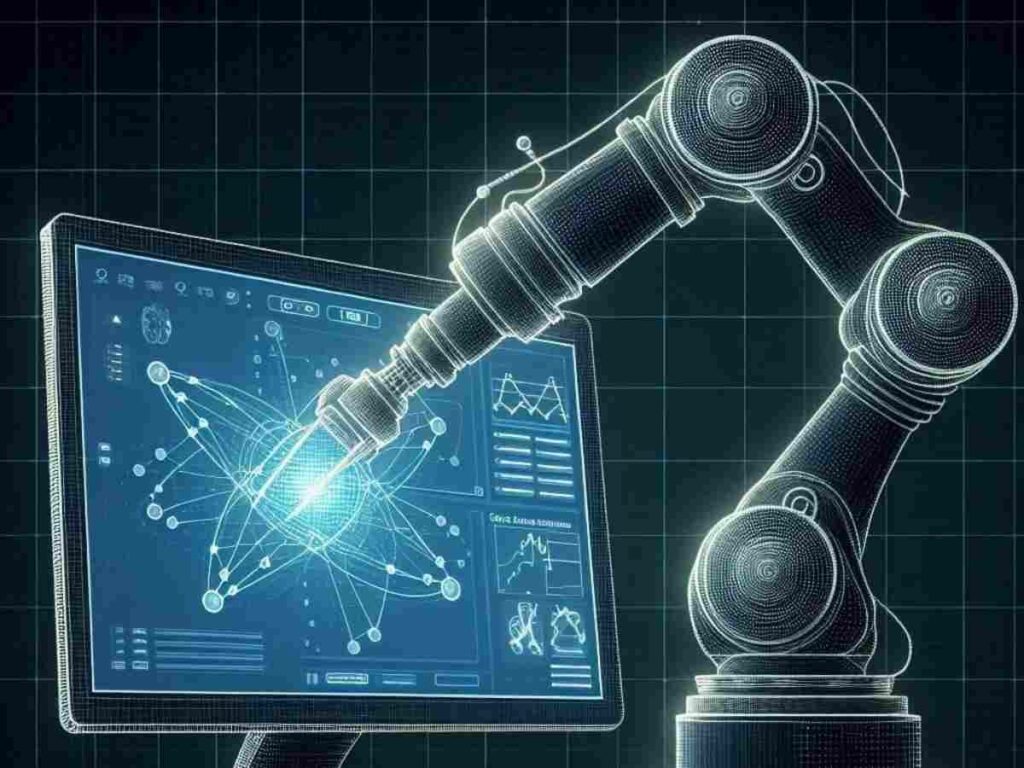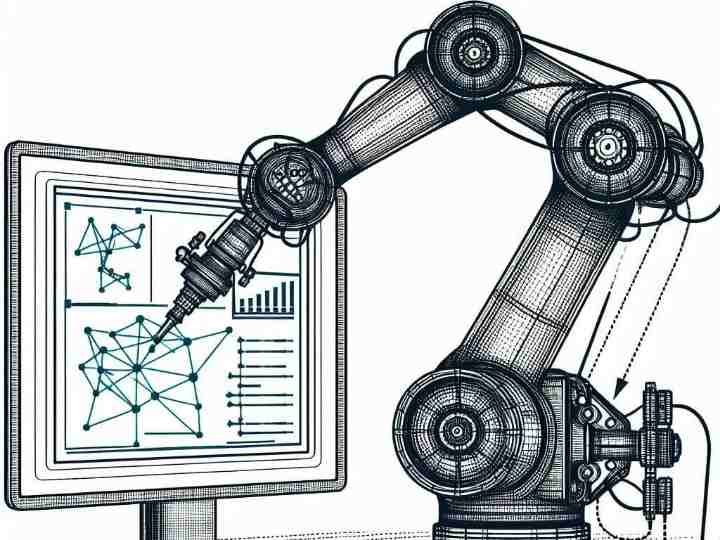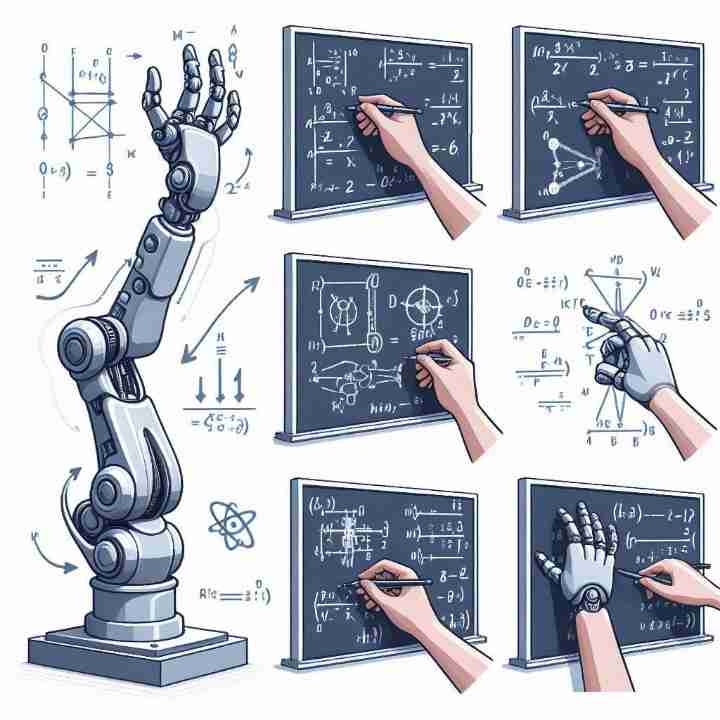“What is the purpose of inverse kinematics in Robotics?” This question lies at the heart of understanding how robots can accurately and precisely position their end-effectors, such as robotic arms or legs, to perform intricate tasks. To uncover this mystery, we must first delve into the realm of kinematics – the study of motion without considering the forces that cause it.
Kinematics can be broadly categorized into two branches: forward and inverse kinematics. Forward kinematics is the process of determining the position and orientation of a robot’s end-effector given the joint angles or parameters. Conversely, inverse kinematics tackles the inverse problem – calculating the joint angles or parameters required to position the end-effector at a desired location and orientation.

To illustrate this concept, imagine you have a robotic arm with multiple joints, and you want to position its end-effector (e.g., a gripper or tool) at a specific location and orientation. Forward kinematics would enable you to determine the resulting end-effector position and orientation given the joint angles. However, in most practical applications, you know the desired end-effector position and orientation, and you need to calculate the required joint angles to achieve that configuration – this is where inverse kinematics comes into play.
Significance of Inverse Kinematics
Imagine a world where robots are seamlessly integrated into our daily lives, assisting us in tasks ranging from delicate surgeries to intricate manufacturing processes. Inverse kinematics is the key that unlocks this reality, enabling robots to navigate complex environments and perform intricate movements with precision and dexterity.
- Inverse kinematics plays a vital role for continued advancement in robotics, automation, and computer graphics. As we push the boundaries of what is possible, the ability to accurately control the positioning of robotic systems becomes increasingly crucial. From industrial automation to realistic character animation, inverse kinematics is at the core of enabling these advancements.
- Moreover, the field of inverse kinematics is rapidly evolving, with innovative analytical and learning-based hybrid approaches emerging. These techniques combine traditional mathematical models with cutting-edge machine learning algorithms, allowing robots to learn and adapt their movements in real-time, paving the way for more intelligent and autonomous systems.
- One exciting development is the advent of real-time adaptive inverse kinematics for dynamic environments. As robots venture into unstructured and ever-changing environments, such as disaster zones or exploration missions, the ability to adapt their movements on the fly becomes paramount. Real-time inverse kinematics algorithms can continuously update joint parameters, ensuring robots can navigate obstacles and adjust to changing conditions seamlessly.
Purpose of Inverse Kinematics

At the heart of robotic motion and dexterity lies the fundamental “purpose of inverse kinematics in Robotics.” This intricate process is akin to a choreographer meticulously mapping out the intricate movements of dancers, enabling robots to gracefully navigate their environments and perform complex tasks with precision.
- “Inverse kinematics” is the mathematical wizardry that allows robots to calculate the precise joint angles or parameters needed to position their end-effectors, such as robotic arms or legs, at a desired location and orientation. Much like a sculptor carefully shaping clay, inverse kinematics molds the configuration of a robot’s joints to achieve the desired pose or movement.
- This capability becomes increasingly “critical for motion planning and control of robotic systems with multiple degrees of freedom.” As robots become more sophisticated, with intricate joint structures akin to the human body, inverse kinematics is the key that unlocks their full potential, enabling them to navigate complex environments and execute intricate maneuvers with fluidity and precision.
- Imagine a world where robots can seamlessly assist in delicate surgical procedures, carefully grasping and manipulating instruments with the dexterity of a skilled surgeon. Or envision robotic arms effortlessly welding and painting intricate structures, their movements as graceful as a dancer’s. “Inverse kinematics enables programming complex movements for tasks like grasping, welding, painting, and beyond,” opening up a world of possibilities in various industries.
Applications of Inverse Kinematics

The power of “inverse kinematics in Robotics” extends far beyond theoretical concepts, as it finds numerous applications in diverse fields, revolutionizing the way we interact with and perceive the world around us.
- In the realm of industrial automation, “inverse kinematics” is the driving force behind the precise movements of robotic arms used for assembly, welding, and painting. Imagine the intricate dance of a robotic arm seamlessly welding together the components of an automobile, its joints choreographed by the magic of inverse kinematics, ensuring every weld is executed with surgical precision.
- Meanwhile, in the medical field, robotic arms equipped with inverse kinematics are transforming surgical procedures, enabling minimally invasive operations with unprecedented dexterity and accuracy. As you recover from surgery, take a moment to appreciate the robotic arm that assisted your surgeon, its movements as delicate as a butterfly’s wings, guided by the intricacies of inverse kinematics.
- Humanoid and legged robots, inspired by the very mechanics of the human body, rely heavily on inverse kinematics to navigate complex environments with grace and agility. Picture a search and rescue robot, its limbs deftly traversing rubble and debris, its movements dictated by the algorithms of inverse kinematics, bringing hope to those in need.
- Beyond the physical world, “inverse kinematics” has also revolutionized computer animation and video game character movement. As you immerse yourself in the latest blockbuster or video game, marvel at the lifelike movements of the characters, their every stride and gesture meticulously crafted by the application of inverse kinematics, blurring the line between reality and fantasy.
Final Thoughts
In the ever-evolving landscape of robotics, “inverse kinematics” emerges as a fundamental pillar, enabling robots to navigate and interact with the world around us with extraordinary precision and dexterity. From industrial automation to medical marvels, and from search and rescue missions to the realms of entertainment, the applications of inverse kinematics are huge and amazing.
As we continue to push the boundaries of what is possible, the importance of this intricate mathematical discipline will only continue to grow. With the advent of advanced techniques like hybrid analytical-learning approaches and real-time adaptive algorithms, “inverse kinematics” will pave the way for even more sophisticated robotic systems capable of seamlessly operating in dynamic and unstructured environments.
In this rapid evolving world of Robotics, there os new brach called Swarm Robotics. Do you know – What is the primary purpose of Swarm Robotics?









